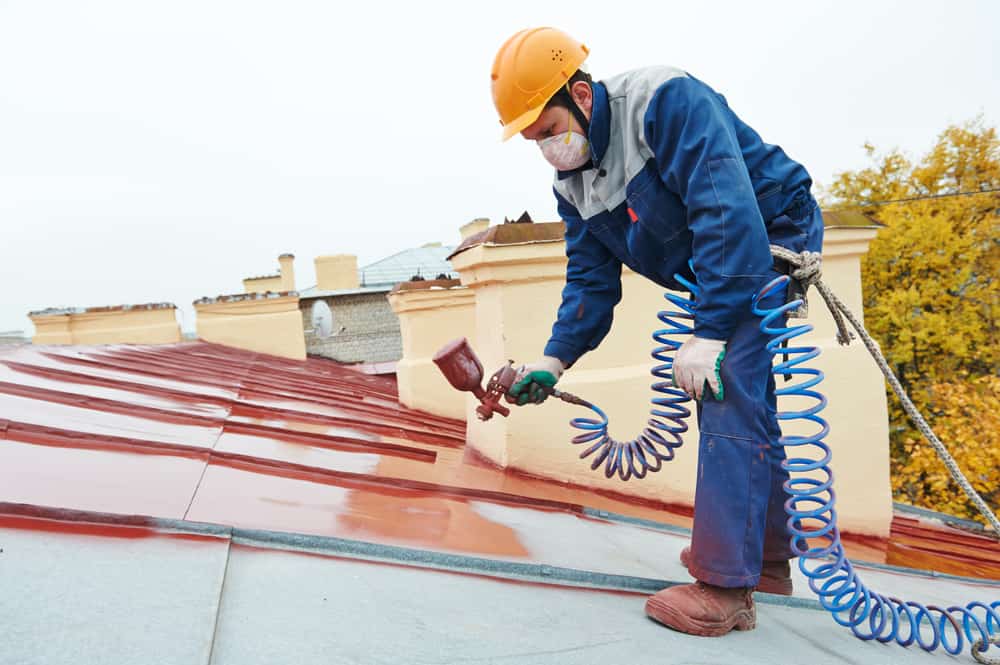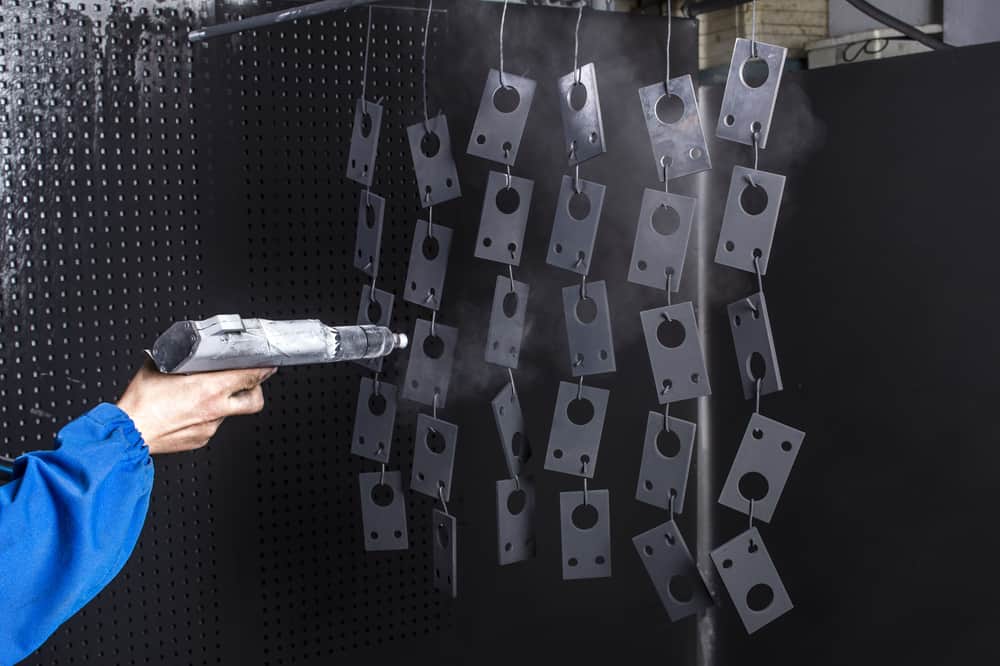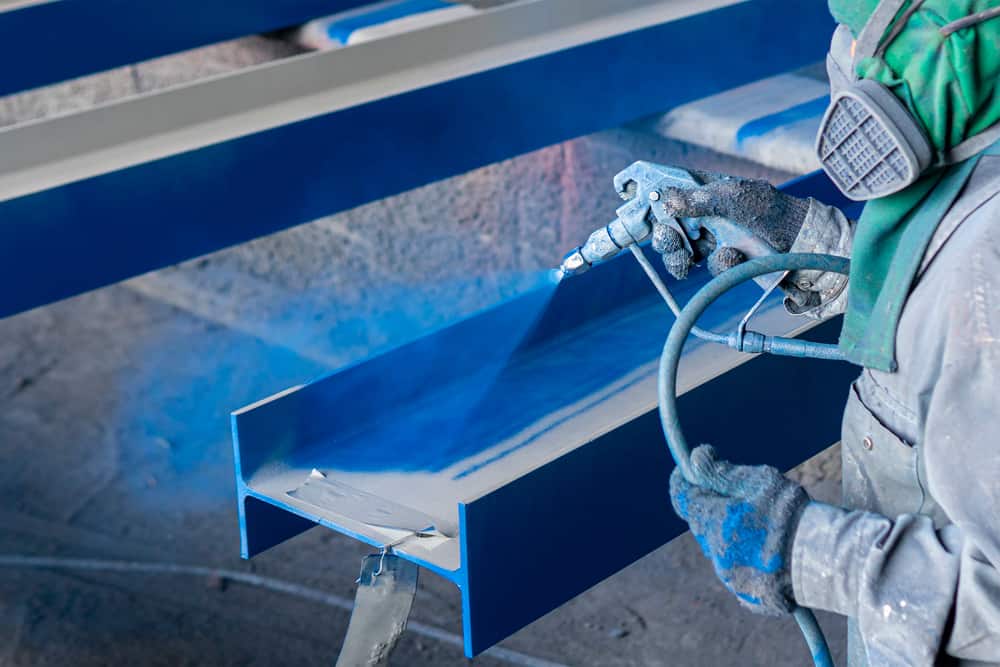Your business can’t afford to have its products, parts, or equipment damaged by the environment.
The list of potential hazards that can damage your business’ property is long: humidity, UV rays, salt water, chemicals, and more.
A good protective coating system will be a barrier between your valuable equipment and the harmful agents trying to damage it.
Many types of protective coatings are available on the market, each with unique benefits.
What Is a Protective Coating?
A protective coating is a layer of material put on an object’s surface to keep it safe from the elements. The covering used will be determined by the item’s intended function and usage environment.
For example, a coating may be applied to the metal to prevent rusting or to concrete to protect it from weathering. Protective coatings can be applied to both internal and external surfaces and be temporary or permanent.
In some cases, a coating may serve both aesthetic and protective purposes. For example, a clear coat of paint may be applied to a car to protect the paint job while allowing the underlying colour to show through.
Whether applied for practical or cosmetic reasons, protective coatings play an important role in preserving the integrity of many different types of commonly used materials.
Where Is Protective Coating Used?
Protective coatings can be applied to many objects, including metal surfaces, concrete floors, and even wood furniture. In many cases, the type of protective coating used will depend on the environment in which the object will be used. For instance, objects exposed to harsh chemicals or high temperatures may require a different type of coating than those used in more moderate conditions.
With so many different types of protective coatings available, it is easy to find one that is right for any application.
The Different Types of Protective Coatings
There are several types of protective coverings available on the market. The following are some of the most frequent ones:
Epoxy Coatings
Epoxy coatings are a type of material applied to surfaces to protect them. Epoxy resin is a polymer created when two chemical compounds are combined. This mixture is then applied to the surface that needs to be protected.
Once it dries, the epoxy coating forms a hard and durable protective layer. Epoxy coatings are often used on metal surfaces and offer corrosion and chemical resistance.
Epoxy coatings can also be used on concrete and wood surfaces. They are durable and resistant to most chemicals and can withstand a lot of wear and tear. It makes them an ideal choice for surfaces that must be protected from corrosive materials or harsh cleaning products.
Polyurethane Coatings
Polyurethane coatings are a type of protective coating typically applied to metal surfaces. These coatings are very tough and can resist scratches and dents. They are also water and chemical-resistant.
Polyurethane coatings are typically clear or amber in colour and can be either glossy or matte.
Applying a polyurethane coating to a metal surface can help extend its lifespan and improve its appearance. These coatings are commonly used on automobiles, boats, and aircraft. They are also sometimes used on metal furniture and appliances.
Acrylic Coatings
Acrylic coatings are thin and flexible, making them ideal for applications where a lot of movement is expected. They are also resistant to moisture and most chemicals.
Acrylic coatings are typically applied as a liquid, and they cure to form a tough, durable film. These coatings are commonly used on metal surfaces and on wood, concrete, and plastic.
One advantage of acrylic coatings is that they can be applied in various colours. It makes them an attractive option for decorative applications. In addition, acrylic coatings can protect surfaces from ultraviolet light, abrasion, and weathering.
Protective Coatings for Corrosion Prevention
Many industries rely on metal components, often exposed to harsh conditions that can cause corrosion. This deterioration can not only weaken the metal but also lead to the release of toxic chemicals. To protect against corrosion, many metals are coated with a protective layer.
By using these coatings, industries can extend their metal components’ life and prevent harmful chemicals from being released into the environment.
PTFE Coating (Polytetrafluoroethylene)
PTFE coating, also known as polytetrafluoroethylene, is a fluoropolymer with excellent corrosion resistance. It forms a barrier that protects against many corrosive chemicals, including acids, alkalis, and solvents, when applied to metal surfaces. It’s resistant to high heat, weather conditions, and UV light, making it an excellent choice for applications that need durability and long-term performance.
Thermal Coating
Thermal coatings are applied as a liquid or powder and then cured using heat. The coating is extremely tough and durable, providing an excellent barrier against oxygen and moisture. In addition, thermal coatings can also reflect sunlight and reduce heat transfer, making them ideal for use in hot climates. As a result, thermal coatings offer an ideal solution for preventing corrosion.
Fluoropolymer Coating
A fluoropolymer is a synthetic polymer that contains atoms of fluorine. Fluoropolymers are non-reactive, heat-resistant, and durable polymers with many uses. They are used in producing non-stick cookware, Teflon coatings, and many other products.
Fluoropolymers can also be used as protective coatings on metal surfaces. When applied to steel, for example, fluoropolymers create an invisible barrier that helps to prevent corrosion.
The coatings are extremely thin and can be applied evenly to complex shapes. In addition, they are resistant to abrasion and chemicals, making them ideal for protecting surfaces exposed to harsh environments.
Powder Coating
Powder coating is a dry coating applied to metal surfaces to protect them from corrosion. It provides several benefits over other coatings, including its ability to resist UV light, salt spray, and humidity, excellent adhesion to metal surfaces, and can be applied quickly and easily.
Phenolic Coating
The phenolic coating is a resin-based coating commonly used as a protective finish on metal surfaces. The coating comprises two main components: a phenolic resin and a curing agent. When these two substances are mixed, they form a hard, durable film resistant to corrosion, abrasion, and extreme temperatures.
Phenolic coatings are typically applied in thin layers and can be either clear or pigmented. Clear coatings are often used on metals exposed to sunlight, while pigmented coatings are better suited for use in harsh environments or on surfaces that require a high degree of protection.
Phenolic coatings can also be applied to wood, concrete, and other materials. When used as a protective coating, phenolic coatings help extend the underlying surface’s life by protecting it from the elements.
Phosphate Coating
When applied to metal surfaces, phosphate coatings create a barrier that protects the underlying material from exposure to corrosive agents. Phosphate coatings are applied through a process known as hot dip galvanisation, in which the metal is dipped in molten phosphorus. The phosphorus reacts with the metal to form a thin, durable film that adheres to the surface of the metal. This film protects the metal from corrosion by providing a barrier between the metal and the environment.
In addition, phosphate coatings can improve the appearance of metal surfaces by providing a uniform colour and smooth finish. When properly applied, phosphate coatings can provide effective protection against corrosion for many years.
The Benefits of Protective Coatings
Protective coatings offer a wide range of benefits for residential and commercial applications.
- They can improve the durability of various surfaces, from metal to concrete, and provide long-lasting protection from various environmental conditions, including UV radiation, chemical exposure, and abrasion.
- In addition, protective coatings can enhance the appearance of a surface while making it easier to clean and maintain.
- In many cases, using protective coatings can also improve productivity by reducing downtime due to maintenance or repairs.
As a result, protective coatings offer several advantages, making them an ideal solution for many needs.
Conclusion
As you can see, many types of protective coatings are available on the market, each with unique benefits.
Businesses need to assess their needs and choose the best option for their particular application.
About Atlas Wear Solutions – Protective Coating Experts
Atlas Wear Solutions have specialised in providing wear and corrosion protective coatings for over 20 years.
Our well-qualified, experienced team can work on your site. We also have our fully equipped workshop in Oak Flats.
With a history of successful projects and delighted customers, our dedicated team of application technicians will find the best solution for your abrasion and wear problems.
Get a Free Site Inspection!
At Atlas Wear Solutions, we understand your situation and your problems are unique to your organisation. We will conduct a no-obligation audit of your site. Our expert supervisor will conduct a 30-60 minute inspection to understand the issues you face and recommend a tailored solution for your problem. We will send you details of our proposed solution and a quote for the work.





